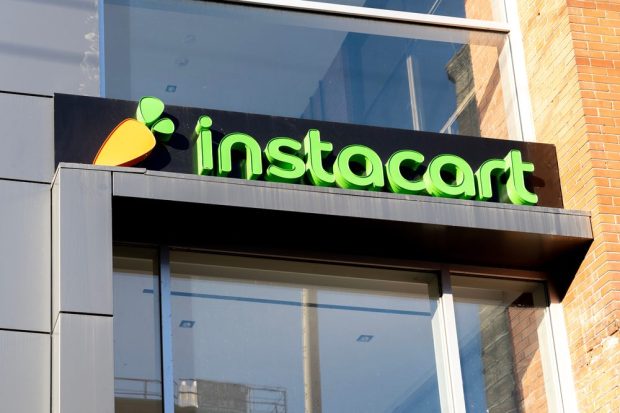Instacart’s Path to IPO: 5 Key Moments

Instacart has come a long way since its inception in 2012, with the company now gearing up for its initial public offering (IPO), which is expected before the end of the year. From the grocery aggregator’s founding a decade ago with support from Y Combinator to today, the company, now valued at tens of billions of dollars, has had a significant impact on how U.S. consumers purchase food.
2013: Membership Launch
In August 2013, just over a year into the company’s existence, Instacart took a page from Amazon’s book, launching a subscription service that offered free delivery for a flat annual fee. Then called Instacart Express, the program has evolved over the past nine years into what is now called Instacart+.
Membership offerings have become a staple of the aggregator model, but Instacart was way ahead of the curve. DoorDash, for instance, didn’t launch DashPass until 2018, and Grubhub didn’t launch Grubhub+ until 2020.
2017: Canada Expansion
In 2017, Instacart announced its first expansion beyond the United States, partnering with Canadian supermarket chain Loblaws to extend its reach into the Great White North. Today, the company has expanded its Canadian offerings considerably, now reaching 90% of households in the country, but it has not grown its international presence beyond the two countries.
That the company has not been making moves to launch its offerings in more countries is somewhat surprising, given Instacart’s appointment of Nikila Srinivasan as its vice president of product, international, in May 2021. In the time since then, however, Srinivasan’s title has truncated to simply vice president of product.
2020: Digital Shift and New Verticals
After expanding its network of partners significantly to include many of the top grocers in the U.S. throughout, Instacart received a boost in 2020 from the rise of the stay-at-home economy, as consumers shut themselves up in their homes during quarantine. This period dramatically accelerated the grocery industry’s digital shift, bringing many new consumers into the online grocery fold.
Also in 2020, Instacart noted the opportunity to expand its offerings beyond just groceries, offering same-day delivery of non-food categories such as home goods, beauty supplies, electronics and more.
2021 and 2022: Acquisitions
In the past couple of years, the aggregator has been on an acquisition spree. In October of 2021, the company acquired catering software company FoodStorm, a move that 10 months later led to the integration of catering capabilities into Instacart’s app, as well as smart cart creator Caper, a move that later added the Caper Cart to Instacart’s offerings for grocers.
This year, meanwhile, the aggregator has announced the acquisition of Eversight, a pricing and promotions platform for consumer packaged goods (CPG) brands and retailers, and earlier this month, of independent retail platform Rosie.
Granted, these are not the company’s first acquisitions, but the rate at which the aggregator is acquiring startups has certainly accelerated. In 2015, the aggregator kicked off its first acquisition, acqui-hiring Wedding Party, a mobile app that let wedding guests create shareable digital photo albums and videos. In 2018, the aggregator acquired Canadian white-label grocery platform Unata.
2022: Platform Approach and Connected Stores
Throughout 2022, the company has been announcing a range of initiatives and new features, accompanied by Fidji Simo replacing founder Apoorva Mehta as CEO in July, with the latter intending to transition off the board when the aggregator goes public.
One major move this year has been the launch of Instacart Platform back in March, offering a suite of products including 15-minute grocery delivery, new marketing solutions and more. Plus, earlier this month, the company announced its Connected Stores offerings, which include smart carts, own-device scan-and-go checkout and more.
Certainly, it has not been smooth sailing for Instacart, with a recent report noting widespread layoffs and with several rounds of cutting the company’s valuation in the recent past. Still, the aggregator’s impact on the United States eGrocery space is undeniable, raising the bar for other aggregators and pushing the category into the future.
